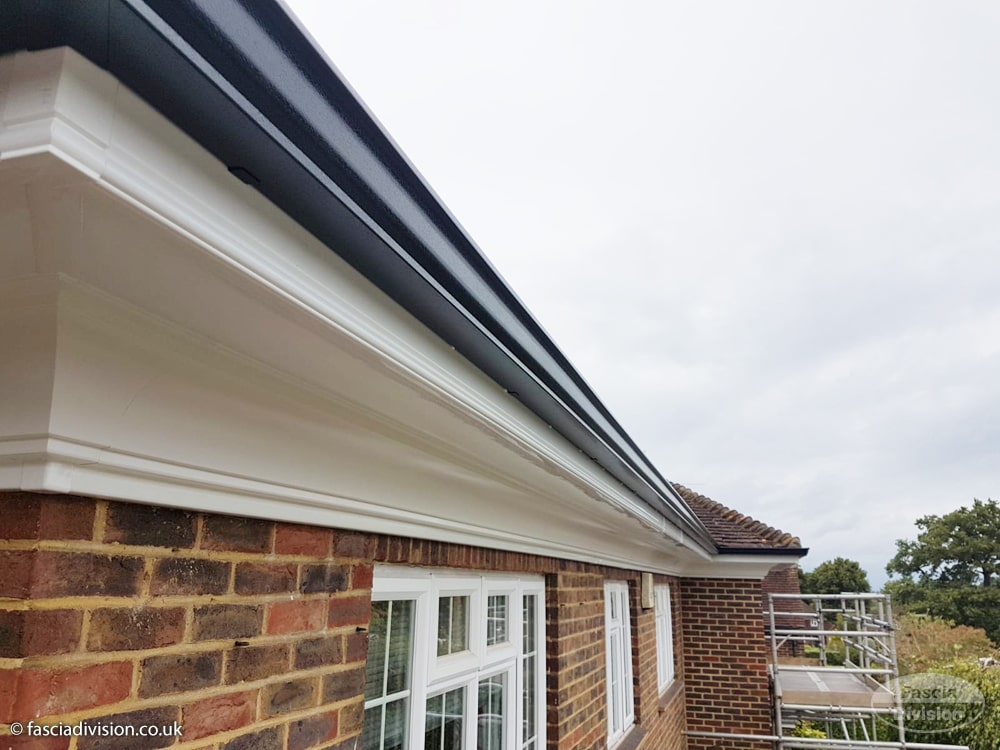
Fascia And Soffit Contractor
Add a review FollowOverview
-
Founded Date March 11, 1989
-
Sectors Electrical Engineering
-
Posted Jobs 0
-
Viewed 93
Company Description
9 Lessons Your Parents Taught You About Eaves Repair

Comprehensive Guide to Eaves Repair
Eaves play an important role in securing homes from weather aspects, directing water overflow, and improving visual appeal. Due to their prominent position, they are typically exposed to the components, leading to conditions that demand repairs. This article lays out the value of eaves, common concerns that emerge worrying them, methods for carrying out repairs, and tips for maintenance.
Importance of Eaves
Eaves are the edges of the roofing that extend over the walls of a building. Their primary functions consist of:
- Water Management: They direct rainwater far from the foundation and avoid flooding.
- Protection from Weather Elements: Help avoid water infiltration, snow, and ice build-up.
- Energy Efficiency: Properly created eaves can minimize heating and cooling costs by controlling sunshine entering through windows.
- Aesthetic Appeal: They improve the architectural style of a building, including character and design.
Common Issues with Eaves
Eaves can face a number of problems due to their direct exposure to the elements. Here are a few of the most frequent problems:
| Problem | Description |
|---|---|
| Damage from Water | Erosion, rot, or mold triggered by insufficient drain. |
| Pest Infestations | Birds, bugs, and rodents may discover shelter in eaves. |
| Structural Damage | Warped or broken eaves can compromise roof stability. |
| Missing/incomplete | Missing out on shingles or panels can expose the interior. |
| Fractures and Gaps | Permit water penetration and bug entry. |
Eaves Repair Methods
Repairing damaged eaves needs varying approaches depending on the problem’s seriousness. Here’s a structured approach to eaves repair:
1. Evaluate the Damage
Before continuing with any repairs, conducting a comprehensive examination is essential. Try to find:
- Visible damage to the eaves.
- Signs of water damage on walls and foundations.
- Insect problems or nesting.
2. Collect Necessary Materials
Depending on the repair needs, the following materials may be needed:
- Ladder
- Security gear (gloves, goggles, mask)
- Replacement materials (shingles, wood, and so on)
- Caulk or sealant
- Paint (for visual appeals)
3. Conduct the Repairs
The following are actions for common repairs:
-
Replacing Damaged Sections:
- Cut away harmed parts of the eaves.
- Procedure and cut replacement pieces to fit.
- Attach the brand-new sectors utilizing nails or screws.
-
Sealing Cracks and Gaps:
- Use caulk or sealant to fill spaces.
- Guarantee the area is clean and dry before using the sealant for reliable adhesion.
-
Strengthening the Structure:
- If structural components are harmed, think about including support brackets or changing bigger areas of wood.
4. Finish with Painting
After repairs, re-paint the eaves to protect the materials from additional wear and tear and match them with the home’s exterior.
Preventive Maintenance Tips
To extend the life expectancy of eaves and prevent substantial repairs, regular maintenance is needed. Here are some proactive procedures homeowners can take:
- Regular Inspections: Conduct assessments at least twice a year to determine any emerging concerns early.
- Tidy Gutters: Ensure rain gutters are without particles to facilitate proper water flow.
- Trim Overhanging Branches: Prevent leaves and branches from building up and triggering water backups or damage.
- Insect Control: Regularly examine for and eliminate bug infestations.
- Repaint Every Few Years: Protect wooden eaves by repainting or staining as required.
When to Call a Professional
While many property owners can manage minor repairs, some scenarios necessitate professional assistance. Consider employing a professional if:
- The repair involves substantial structural damage.
- There are security issues, particularly when handling heights.
- Inadequate experience in repairs leads to uncertainty about proper methods.
Regularly Asked Questions (FAQs)
Q1: How often should I inspect my eaves?
A: It is advised to check eaves a minimum of two times a year, ideally in spring and fall, to recognize possible concerns.
Q2: What are the signs that my eaves require repair?
A: Signs include noticeable damage like cracks, drooping, peeling paint, water stains, and pest problems.
Q3: Can I repair my eaves myself?
A: Many minor repairs can be done by property owners, but it’s crucial to evaluate skill levels. For considerable repairs, hiring a professional is recommended.
Q4: How do I avoid eaves from ending up being damaged?
A: Regular maintenance, including cleaning seamless gutters, examining for damage, and protecting against insects, can assist avoid eaves from deteriorating.
Q5: Are eaves repairs covered by property owners insurance?
A: Coverage can differ by policy. It’s vital to speak with your insurance company concerning particular scenarios and protection types.
Eaves play a crucial role in a home’s structural integrity and visual appeal. Repairing and maintaining them is necessary for preserving their functionality and extending their life-span. With regular inspections and proactive care, property owners can avoid minor issues from intensifying into more extreme problems. Whether going with DIY repairs or employing a professional, comprehending eaves and their maintenance requires guarantees a safe, effective, and stunning living environment.
